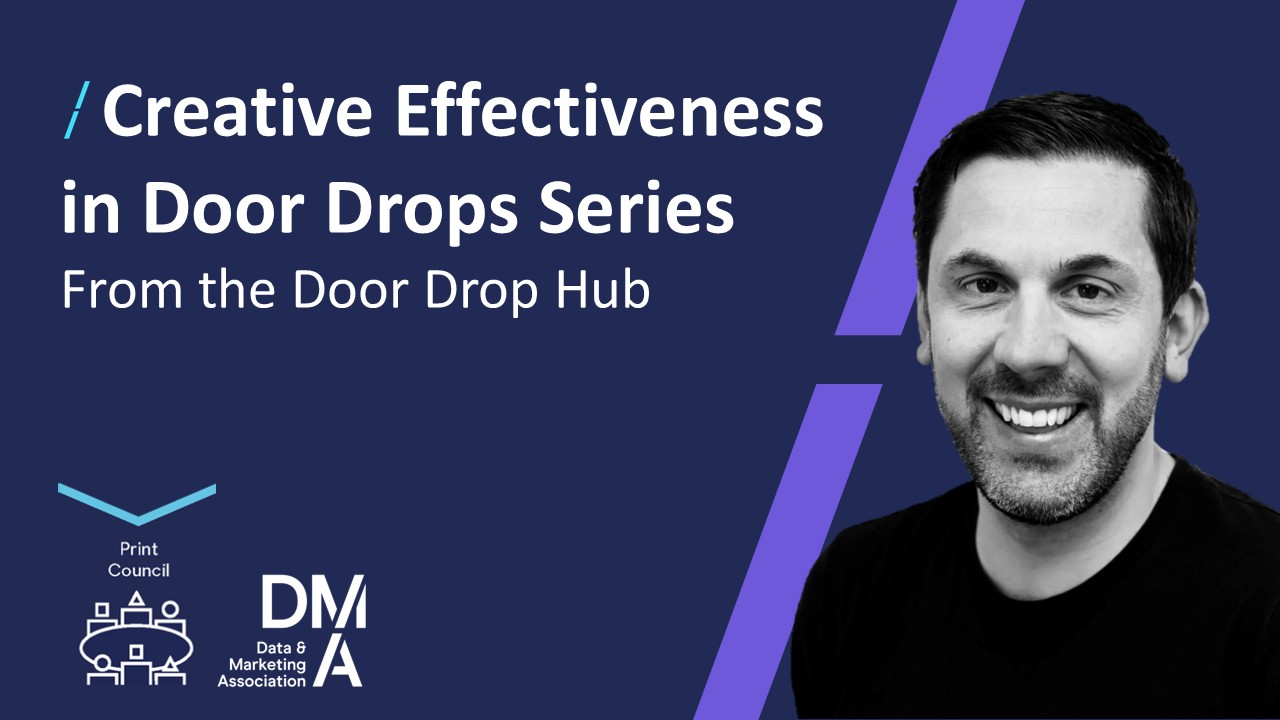Interactive Email Examples, Tips and Tricks (with Jennifer Birks)
05 Jun 2024

You may have seen them: interactive emails. They are the most engaging type of emails we can produce tech-wise. But… somehow, somewhere, something makes that these are more rare than a horse dressed as a unicorn in a yellow striped suit. We are here to change that, or at the least give you a taste of what is possible.
For this article, I spoke with Jennifer Birks. She will be presenting at the EMAS DDMA Email Marketing Summit in the Netherlands on 27 June with a session called “Interactive Experiences to Elevate your Email Engagement” or IEtEyEE.
Jennifer is an email developer and marketing automation engineer who runs an Email Marketing YouTube channel called The Email Code. She has 10 years of experience with campaigns for clients like Nissan, Vodafone, Odeon Cinemas, Secret Escapes, and many others.
Jen, What Is Interactive Email Marketing and Why Is It Important?
Email marketers are confronted with significant challenges today. Approximately 320 billion emails are sent daily around the world, so getting an email to stand out is quite a task. We are all noticing how attention spans are getting shorter and shorter (it is just eight seconds now?!). So I’m sure many markers will agree; capturing a recipient's attention that encourages engagement and action is pretty hard!
Interactive email marketing is a powerful way to stand out in crowded inboxes. But what is it, exactly? Well, take your average everyday email with static text and images, and with a bit of strategic expertise and technical know-how, you can add some really exciting functional elements to it that actively engage recipients with the content.
Interactive email possibilities include features like:
-
hover effects,
-
image carousels,
-
clickable hotspots,
-
gamification elements,
-
and other dynamic content!
When done right, the real magic of what interactivity can do for your email campaigns is enhanced engagement, as interactive elements can capture and retain recipients' attention more effectively. An improved user experience is the second, and these can lead to higher conversion rates.
Despite the benefits, only 26.5% of email marketers plan on adding interactive content to their email marketing strategy. So email interactivity is a good opportunity for brands to stand out and deliver experiences that are more engaging and memorable than anything else in your recipients’ inbox.
What are some key statistics that showcase the effectiveness of interactive emails?
If you’re still not convinced, here are some more statistics that show that interactive emails have proven to be highly effective in enhancing engagement and performance metrics compared to traditional emails:
It has been reported that 60% of email recipients said they are likely to engage with an interactive email, and click-to-open rates also benefit, with interactive emails achieving an increased click-to-open rate of 73% compared to their non-interactive counterparts.
Crucially, these factors combined translate to almost a 200% increase in conversion rates, with interactive content like quizzes, surveys, and forms boosting conversions of 70% compared to just 36% for passive content, essentially doubling the ROI of your email campaigns.
Successful interactive emails that are interesting
Here is a selection of my all-time favourite interactive emails, and why I think they are awesome:
1. Burberry Scarf Picker Email
This email is a few years old now, but it is still one of my favourite emails ever; I think it is one of the most innovative emails I’ve seen! It is a super sleek kinetic email campaign with a three-step interactive scarf personalisation feature. Recipients using a WebKit-based email client could select a scarf and preview it with their initials monogrammed on it. This is such a clever way of delivering a completely personalised user experience without the recipient having to leave their inbox!
2. Taco Bell Scrolling Email
This email from Taco Bell is another personal all-time favourite of mine! The email was built by an agency called Thesis creative, and they used a clever CSS fixed positioning tactic with scrolling background images to tell the narrative of 3 different characters and how they found their way to Taco Bell. This is such a fun way of engaging the user as they scroll through the email to see what happens next!

3. Infiniti ‘Hotspots’ Email
‘Hotspots’ are one of my favourite interactive email techniques because they provide an engaging way to interact with content and gain more information about a featured product directly within the email. This hotspots email that I worked on for Infiniti was really fun to create, offering more information in exchange for user engagement in a visually engaging way!

4. Pret’s drink selection email
Animated gifs are a great way of giving your emails a ‘wow’ factor, but I love this Pret email because it takes the use of gifs to the next level with a clever touch of interactivity! It features a series of clickable buttons which change the animated gif in the hero section of the email to showcase each of their delicious looking drinks. Why am I suddenly feeling so thirsty?!
5. 1973 Christmas Email
The only thing I love more than Christmas is an interactive Christmas email, so I think this clever example from 1973 will always have a place on my list of favourites. It starts with a clickable present which takes you to a delightful Christmas scene with clickable buttons that allow the user to toggle the lights and the (css animated) snow on and off - genius!
So what about gamification? What are some examples of gamification techniques that can be applied to email marketing?
One of my favourite things about interactivity is that it presents some amazing opportunities to use gamification in your email campaigns. Gamification is adding game-like elements, like challenges, rewards, and competition into the non-game context of an email. The goal is to motivate and engage your subscribers when you want them to go and participate more actively. Here are some awesome gamification techniques that can be applied to your email marketing campaigns:
Scratch Cards: this is a really cool gamification element you can use to ‘reveal’ an offer or an incentive. It taps into the user’s curiosity to get them engaging with the content. Have a look at this awesome Black Friday email from Bose which uses this technique:
Spinner Games: You have an animating element (in this case, the animation is a spin) with a button that stops the ‘spinner’ and gives you an outcome, such as this really cool ‘Mother’s Day Spinspiration’ campaign I’ve worked on. You can tweak it by presenting different products, discounts, and ideas!
Change the outcomes based on user interaction: check out this really impressive example from Kristian Robinson, who built an entire sonic game for email using CSS animation and clickable buttons. Depending on the user clicking the button at the correct time, sonic will triumph or fall into spikes, eek!
Flip Cards: Flip cards are another interactive gamification element that you can use to enhance user engagement. They use the curiosity tactic to entice the user to click to reveal some hidden information! Have a look at this example from Disney which uses this element really well by providing a ‘clue’ on each card which the user then needs to click on to see if they got the correct answer (if only I could speak Spanish!).
Hover Effects: In a similar (and simpler!) vain, you can also use hover effects as a gamification element to reveal information as a reward for engagement. Instead of clicking on a flip card, the subscriber just has to ‘hover’ over an element with their mouse to trigger the reveal. Have a look at this example that I built for Odeon cinemas where we used a hover effect to do a ‘character reveal’ to promote one of the Avengers movies.
What are the most common challenges marketers face when designing interactive emails? What is stopping them?
Designing interactive emails doesn't come without challenges, but understanding these can help marketers tackle them effectively.
One key issue is compatibility across different email clients. Since Gmail, Outlook, and Apple Mail render HTML and CSS differently, interactive elements don't always appear the same or may not be supported. However, if you know the limitations, marketers can design with broad compatibility in mind and put necessary fallbacks in place, so that your email campaigns provide a consistent user experience no matter which email client your recipients are using.
Technical complexity is another tricky challenge that markers are faced with. Creating interactive elements requires coding skills and thorough testing, which can be a costly feat in terms of resources. Luckily, there are some great tools and resources in the email community that help speed things up, such as:
-
Testing tools like Litmus and Email on Acid which enable you to test your emails efficiently across a wide range of email clients and devices.
-
Online resources such as FreshInbox and ReallyGoodEmails which provide awesome design inspiration and code examples.
-
Community forums such as the Email Geeks slack channel where you can get great support and advice from other developers and email professionals.
User experience and analytics can also be a tricky thing to get right, as tracking user interactions with interactive elements can be tough. It’s important to know upfront what analytics you need and what is and isn’t trackable so that you can strategize effectively and choose interactive elements that work best for the goals that you want to achieve.
Despite the initial hurdles, I think that the benefits of interactive emails—higher engagement, better conversion rates, and improved customer retention— still make them a worthwhile addition to any marketing strategy.
3 top tips for interactive email
1. Stick to one interactive element per campaign:
Imagine trying to juggle a quiz, a carousel, and a countdown timer all at once – it’s like trying to ride a unicycle while juggling flaming torches; impressive, but likely to end in disaster.
Keeping it simple with one interactive element ensures that your recipients are not overwhelmed and can easily engage with your content. Plus, it saves your sanity during the design and testing phases!
2. Involve your team in planning your interactive email campaigns:
Developers can help designers understand the technical boundaries of email. Strategists and data analysts can offer some great insights into some of the areas that could appeal to your recipients. Working together is like assembling the Avengers of Email Marketing. Each team member brings their superpowers to the table, and with this cooperation, you might just save the world. Or at least, your email’s ROI rates.
3. Treat interactivity as a secret weapon. Use it when you need it the most:
Incorporating interactive elements can be resource-heavy, so save it for when you need to make the biggest splash. For example, during high-traffic times like Black Friday, when you're battling for your recipient’s attention amidst a flood of other emails. Or like a birthday email, for a special occasion. The surprise effect won't work if you do it all the time, so make it count.
When is it worth it / not worth it according to your opinion for marketers to "go interactive"?
I would encourage marketers to give interactive email a try because it can significantly boost engagement, click-through rates, and campaign effectiveness. But there are certain scenarios where it might not be the best choice. Here are some of the things I use to decide if it is worth it to “go interactive”:
Resource Constraints: (if you don't have time or budget)
If your team lacks the technical expertise or time to properly design, test, and implement interactive elements, the effort may not give the results you’re after. Poorly executed interactivity can lead to rendering issues, decreased deliverability, and a frustrating user experience!
Simple Messaging: (if it's not needed)
For straightforward communications, such as transactional emails or brief updates, adding interactivity might complicate the message unnecessarily. In these cases, a clear and concise approach is often more effective.
Audience Readiness: (it should fit with the audience)
If your audience is not tech-savvy or tends to prefer simpler content, overly complex interactive elements might not work well. Understand your audience; in certain situations, traditional emails could be more appreciated and effective.
The decision to "go interactive" should be based on the goals of your campaign. Look at the resources available, and the preferences of your audience. When done thoughtfully, interactive emails can offer significant advantages, but it's essential to balance ambition with practicality.
Be sure to have a look at the EMAs agenda for the event on 27 June and say hi to Jennifer Birks there for some real-life interactivity (no email needed in that case!), or check out her Youtube Channel and LinkedIn.





Please login to comment.
Comments